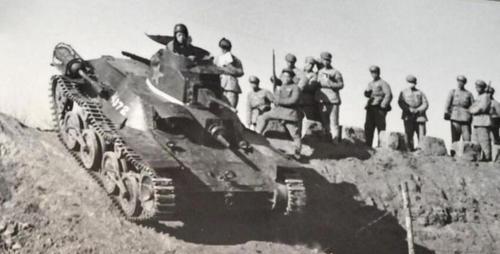After the victory of the War of Resistance Against Japanese Aggression, China's treatment of Japanese prisoners of war at that time was the most lenient among the victorious countries, and except for a very small number of high-ranking war criminals, the rest of the prisoners of war were basically released and returned to China. At that time, other countries were not so benevolent, the United States directly stationed troops in Japan, so that Japan can not be regarded as a sovereign country until now, the Soviet Union directly pulled more than 600,000 Kwantung Army prisoners of war to Siberia to work as coolies, the first year died more than 100,000, Australia at that time even the Japanese emperor had to punish.

China had actually planned to send troops to Japan at that time, and Sun Liren's troops were all on standby at that time, but they were delayed by the civil war. At that time, in order to deal with the People's Liberation Army, the Kuomintang recruited a lot of Japanese troops, Chiang Kai-shek paid homage to Okamura Ningji, commander of the Japanese dispatch army in China, as his guest, and Yan Xishan recruited tens of thousands of Japanese troops to fight a civil war, and these troops were later annihilated by the troops led by Chen Geng and Xu Xiangqian. At that time, the Northeast Field Army also collected more than 30,000 Japanese prisoners of war, but the Japanese prisoners of war collected by the Northeast Field Army were completely different from those of the Kuomintang side, and they were of completely different nature.
When the Northeast Field Army first entered the Northeast, it had a very good relationship with the Soviet Union at that time, so it was possible to add some useful talents from the prisoners of war of the Kwantung Army. At that time, China's cultural popularization rate was very low, a company did not necessarily have a literate, a regiment did not necessarily have a car, not to mention artillery, automobile troops, tank soldiers, medical soldiers these relatively high technical content of the military, the Cultural quality of the Japanese army is generally higher, so the Northeast Field Army selected some to enter the Northeast Field Army.
At that time, the Northeast Field Army had the largest number of medical personnel, and the Northeast Field Army reached more than 1 million people at its largest scale during the Liberation War. During the Liaoshen Campaign, the Nationalists and Communists had more than 1 million troops engaged in a scuffle, the casualty figures were very large, in order to rescue so many wounded, a large number of medical personnel were needed, at that time China did not have such good conditions to train so many medical personnel, so the Northeast Field Army took in seven or eight thousand Japanese medical personnel, these Japanese medical personnel treated a large number of wounded, some were also assigned to other field armies to help rescue the wounded, in the TV series "Bright Sword", the medical staff who rescued Li Yunlong were Japanese.
In the northeast, there are also the largest and most complete arsenals in the country, although many factories were emptied by the Soviet army, but some of them were left. At that time, there were so many professional and technical personnel in China, so they still retained Japanese engineers and technicians to help resume production and increase the production of weapons and ammunition. After the founding of the People's Republic of China, there are still many Japanese engineers in the Anshan Iron and Steel Plant helping China with economic construction.
The cradle of the New Chinese Air Force, the Old Northeast Aviation School, was actually built with the help of hayashi Yaichiro of the Kwantung Army, and many instructors and ordnancers were Japanese personnel, which trained a large number of excellent pilots for China. In addition, in the absence of train drivers and car drivers in China at that time, many Japanese personnel also helped train a large number of automobile soldiers and railway soldiers.